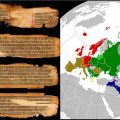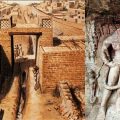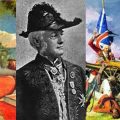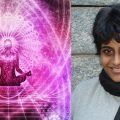How Arabic Persian Influence of Words in Hindi Distorted its Sanskrit Base
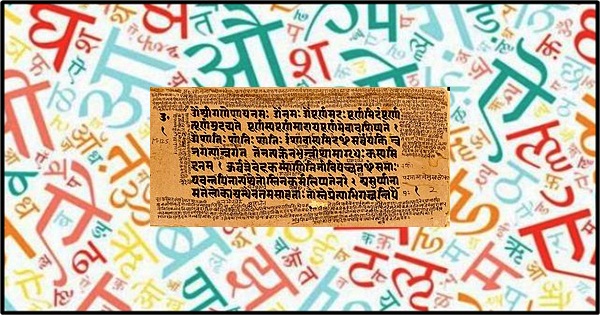
I am a fluent Hindi speaker and has nothing against the language. Nor do i subscribe to Dravidian politics. I am a great promoter of Sanskrit and also Tamil.
But Hindi is a loose language which can be easily used to subvert Bharatiya Samskrti. It indeed happened when Bollywood used it as a vehicle to promote Arabic and Persian words all over India including in the South.
North India was fully dominated by Islamic Invaders and filled all north Indian languages with Arabic words (and Persian words too, as Islamic invaders came passing through Persia).
For example safed, subzi, shayad, hargiz, hardam, dil, deevana, khusboo, badboo, hindu, diwan, havildar, shaandar, tandurust, kofta, kulcha, kurta, biriyani, paneer, maidan, jaldi, zinda, zindagi, rozgar, and so on all Persian.
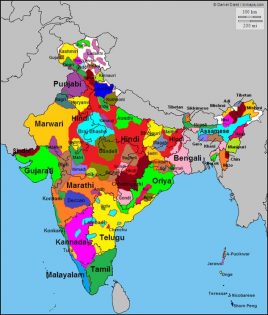
Diversity of Indian languages: Map source: Daniel Dalet.
The words afsos, khilaf, agar, magar, zaroor, lekin, taraf, sahi, galat, saaf, insaf, kaanoon, insaniat, shaheed, mazboot, kamzor, rahm, berahm, vafa, bevafa – all are Arabic.
Think about most of Bollywood movie dialogues and you get more of it.
Whatever Sanskrit words in Hindi are but Sanskrit words with horribly wrong pronunciation eg:- Mandooka – Mendak, Shiras – Sar, Mukha – Mu’h, Naasika – Naak, Karna – Kaan, Jihva – Jeeb, Akshi – Aankh, Hasta- Haath, Paada – Paav and so on.
Arabic Persian inflexion into Southern languages is very meager not even 1% of what happened to Hindi. Thus we have words like Jilla, Tehsil etc, mostly administrative division names, that came from Persian into southern languages but such Persian or Arabic loan words in southern Indian languages is less than 1%.
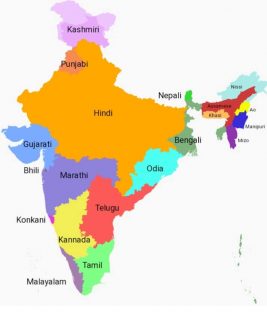
Image courtesy: Google
The vocabulary of Southern languages contain 30% to 60% pure Sanskrit words, like Aanandam, Aishvaryam, Adhikaram, Aayus, Aarogyam, Anumaana, Bhaagyam, Bharanam, Chandra, Chandrika, Chikitsa, Charitram, Dhanam, Dhairyam, Dhaanyam, Dharma, Dvesha, Eeshvara, Ichcha, Phalam, Phanam, Garima, Ghraham, Gahanam, Harsham, Hamsam, Indriyam, Jaya, Jananam, Janmam, Karmam, Kaaryam, Karthavyam, Laaghavam, Lakshanam, Mahima, Maandyam, Mani, Mekhala, Madhuram, Nashtam, Nakham, Nagaram, Oushadham, Ojas, Pramaana, Paramam, Paayasam, Paarshvam, Paribhavam, Pranayam, Raashram, Raksha, Sundara, Shabdam, Sadya, Sangam, Samgamam, Taatparyam, Tantram, Yauvanam, Uurjam, Vaatsalyam, Vastram, Vaardhakyam, Kshanam, Prayoga, Pravrtti, Yuddha, Abhimana, Abhijatya, Vijaya, Vinaya, Varnana, Vimarsana etc.
It is the Persian, Arabic and distorted Sanskrit words in Hindi that makes it difficult for Southern languages to learn in contrast to learning Sanskrit words which are easy to learn for them because they are already present in their languages.
Hence it is wrong to impose / promote Hindi all the while when no such attempt is made to promote Sanskrit which deserve such promotion, in place of Hindi.
Increasing Sanskrit word usage in Hindi will certainly make it more understandable to southern language speakers. No doubt about it. But that is not easy. Correct pronunciation of those Sanskrit words too matters.
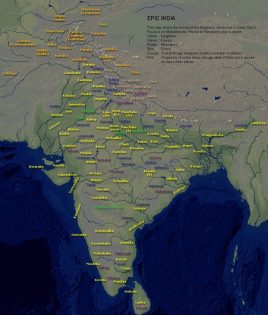
Ancient Bharatvarsha map created by the author Jijith Nadumuri Ravi
It is easy for the Southerners to listen to Sanskrit words in Hindi pronounced in their correct forms. For example, given a choice they would like to call ‘nose’ as ‘naasika‘ because they are familiar with it through Sanskrit. But they won’t like to call it ‘naak‘. In this situation, will Hindi speakers change the word for nose from naak to naasika? These are some practical scenarios.
There is also one more hidden element that not many people know except those who indulge in the realms of the supernatural consciousness.
The correctly pronounced words act as powerful gateways to the super consciousness, allowing one to establish Yogic connections with the consciousness of the ancient gurus and rshis of the past.
Thus, the word ‘naasika‘ acts as a super conscious gateway leading you to deep past while the word ‘naak‘ cut short your journey to the consciousness realms.
This principle is also the basis of mantra saadhana, slokaadhyayana, yogaabhyaasa, and dhyana and also why one gets powerful by developing sharp minds and deep concentration by reciting Sanskrit slokas or merely speaking in Sanskrit.
This is also the reason why Sanskrit bestows better concentration and intelligence to its frequent users.
Most people see the language debate as a one-dimensional political issue (bringing BJP, DMK etc in it) while my focusing is more on its multi-dimensional social, cultural, civilizational and aadhyatmic aspects, not withstanding the fact that Congress for 70 plus years fooled India by promoting Arabic and Persian in the name of Hindi / Urdu promotion much like how Bollywood fooled Indians through Hindi/Urdu dialogs in the popular movies.
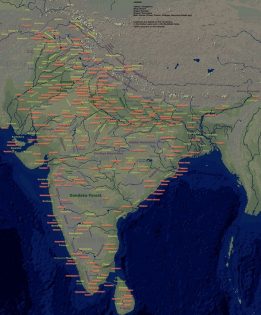
Bharatavarsha city map created by the author Jijith Nadumuri Ravi
We can solve the political aspects of the languages by removing the terms like ‘first language’, ‘second language’, ‘third language’ etc.
Instead define it as:-
Native Language : Malayalam, Tamil, Kannada, Telugu, Oriya, Marathi, Gujarati, Bangali, Maithili, Angi, Magadhi, Avadhi, Suraseni, Santali, etc.
National Link Language: Hindi
International Link Language: English
Inter Cosmic / Inter Conscious Link Language : Sanskrit.
Note:-The maps above also show how a large number of northern languages are approximated as Hindi. These northern languages, each contain greater percentage of Sanskrit in it as they are ancient languages spoken in the ancient janapathas mentioned in the Ramayana and Mahabharata.
Bangali – Vanga janapatha
Angi – spoken in Anga janapatha
Maithili -spoken in Mithila / Videha janapatha
Bhojpuri – spoken in Malla janapstha
Avadhi – spoken in Ayodhya / Kosala Janapatha
Suraseni / Vraja bhasha – Spoken in Mathura, Vrndavana and Surasena janapatha
Khariboli – Hindi – spoken in Kuru / Panchala janapathas
Haryanvi – in Kuru, Matsya and Salva janapathas
Marvari – spoken in Marubhumi (desert) and in janapathas in that region like Salva and Matsya
Bundheli – spoken in Chedi, Dasarna, Karusha, Kunti and Avanti janapathas.
Malava – in Malava, Avanti, Kunti janapsthas
Narmadi – in Haihaya and Mahishmsti
Punjabi – in Trigarta, Balhlika, Madra, Kekaya
Dogri – in Bhahlika, Kashmira janapathas
Kashmiri – in Kashmira janapatha
Kinnauri – in Kinnara regions
Gujarathi – spoken in Anarta, Surastra, Surparaka janapathad and in Dwaraka.
Marathi – spoken in Ashmaka and janapsthas in this region like Balirastra, Pansurastra, Navarastra, Anupa etc and also in Avanti, Kunti and Haiyeya.
It is to be noted that these were derived from the language of the common public who spoke apabhramsha of Sanskrit and royal houses spoke Sanskrit and thus it acted as a link language of communication between all janapathas of Bharatavarsha.
These native languages also need to be promoted with proper growth in literature, theatres, film industries and movies, along with Hindi.
Never in the entire history of Bharatavarsha Hindi was spoken all over Bhaarata. It was always Sanskrit which was the link language for all Bhaaratiyas and adjacent international regions. So the idea of making Hindi as the unifying language today doesn’t enjoy civilizational support and has no basis in the past of Bhaaratavarsha.
Mostly such ideas arise, due to the wrong understanding that Hindi is a modern form of Samskrtam. It is certainly not. The distorted pronunciation of Sanskrit words and the addition of Persian and Arabic words in huge quantities has made it to evolve away from Samskrtam.
All southern languages is infused with plenty of Sanskrit words in the past and so Sanskrit words are intelligible to southern language speakers.
We now have language translation tools and soon real time language communication devices will be a reality in India. It is already working in China, Korea and Japan where the device instantaneously translate anything spoken in English, German, Spanish, or French to Chinese, Korean or Japanese.
Modi- Shah duo can popularise them in India instead of the controversial push for Hindi in the regions where it is not spoken. So when one speak in Tamil to a Hindi speaker it will instantaneously translate Tamil to Hindi and vice versa.
Featured image courtesy: livehindustan.com and Wikipedia.
Note: Author is a former scientist who worked in ISRO (2001 to 2006) at SDSC-Sriharikota, as part of the Cryogenic team of GSLV. Took part in three GSLV launches, manning the liquid nitrogen Cryo Console of the Second Launch Pad (SLP) at Filling Control Canter and engaged in the GSLV count down process. Also worked briefly as part of the Chandrayan Study phase orbital simulations at VSSC-Trivandrum and got appreciation from Dr APJ Abdul Kalam during his visit at VSSC to meet young scientists. Involved in Mark 3 initial design phase, SRL (space capsule recovery) experiments and RLV (reusable launch vehicle) experiments.
He is currently engaged in the research of the geographical data present in the Mahabharata. In this capacity he has presented many papers in various international conferences. He owns a web-portal named AncientVoice containing 23,700 plus wikified pages on Veda Itihasa Puranas. He is also an artist and has visualized many scenes from the Mahabharata which was exhibited in different conference venues. Currently he is working in a leading software MNC focusing on creative research on Virtual Reality using devices like HoloLens. Combining this expertise with software technology he is engaged in creating Virtual Avataras of Itihasa personalities in Virtual Reality, Augmented Reality, Mixed Reality and Artificial Intelligence.
Jijith Nadumuri Ravi
Latest posts by Jijith Nadumuri Ravi (see all)
- 387 ‘Moplah Martyrs’ to be Removed from Freedom Struggle Dictionary - October 23, 2024
- Afghanistan Was Part of Rgvedic Horizon: A Historical Analysis - October 23, 2024
- Why Build a Statue for Rastra Purusha Krishna, the Founder of Delhi? - October 23, 2024

